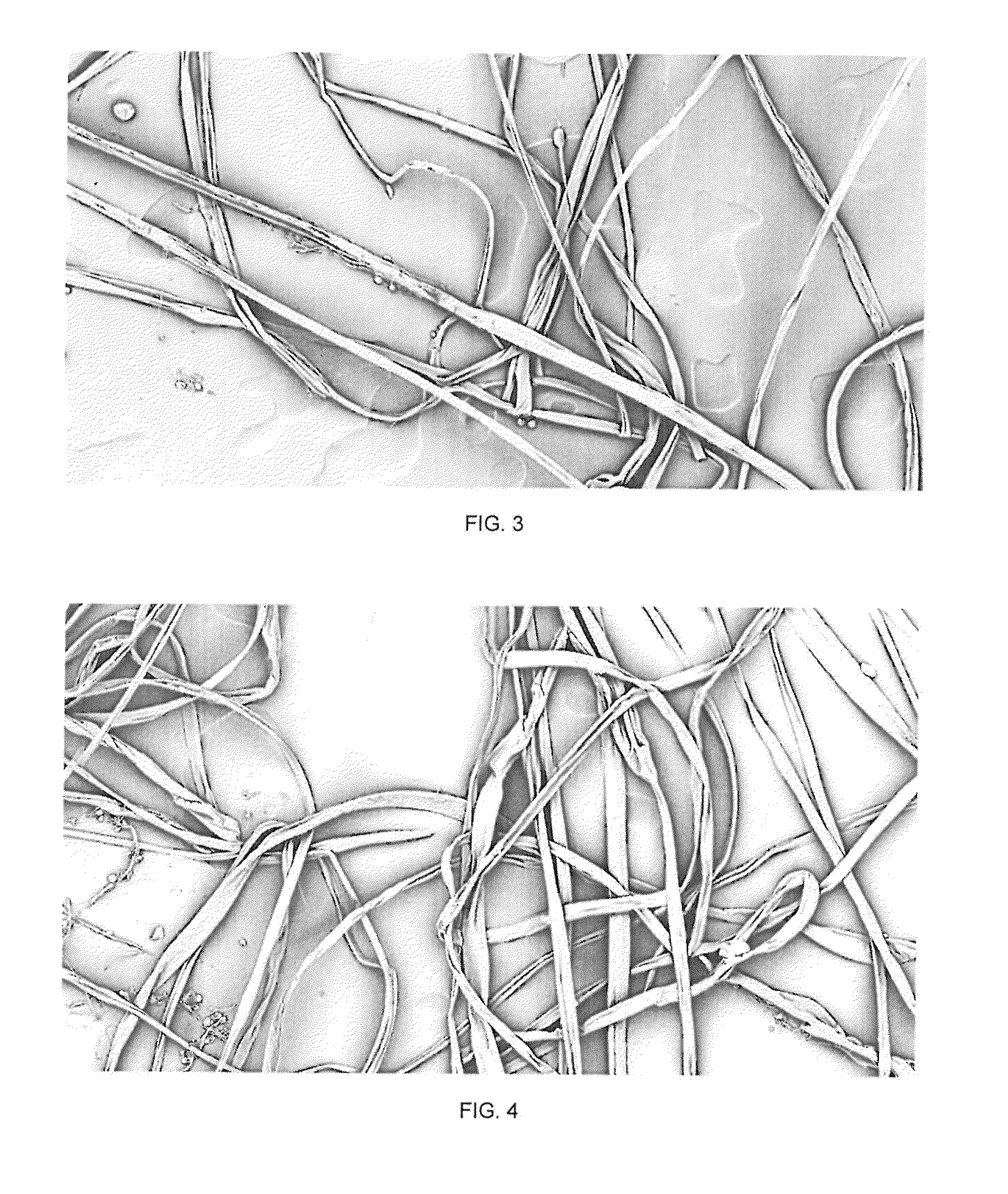Force spun sub-micron fiber and applications
a technology of sub-micron fibers and fibers, applied in the field of forming forming a nonwoven web, can solve problems such as the commercial acceptance of methods, and achieve the effects of increasing the surface area of resins, reducing fiber diameters, and increasing performance benefits
- Summary
- Abstract
- Description
- Claims
- Application Information
AI Technical Summary
Benefits of technology
Problems solved by technology
Method used
Image
Examples
example 1
[0047]As an example a solution comprising of 10 wt. % LEXAN® dissolved in methylene chloride was spun through an orifice diameter of 159 μm (30G) at a spinneret speed of 12,000 RPM. This example resulted in fibers with an average diameter of 2.1 μm. FIG. 3 is an image showing the fiber morphology obtained according to Example 1.
example 2
[0048]As an example a solution comprising of 10 wt. % LEXAN® dissolved in methylene chloride was spun through an orifice diameter of 210 μm (27G) at a spinneret speed of 12,000 RPM. This example resulted in fibers with an average diameter of 1.1 μm. FIG. 4 is an image showing the fiber morphology obtained according to Example 2.
example 3
[0049]As an example a solution comprising of 5 wt. % LEXAN® dissolved in methylene chloride was spun through an orifice diameter of 159 μm (30G) at a spinneret speed of 2,000 RPM. The example resulted in no formation of fibers.
PUM
 Login to View More
Login to View More Abstract
Description
Claims
Application Information
 Login to View More
Login to View More - R&D
- Intellectual Property
- Life Sciences
- Materials
- Tech Scout
- Unparalleled Data Quality
- Higher Quality Content
- 60% Fewer Hallucinations
Browse by: Latest US Patents, China's latest patents, Technical Efficacy Thesaurus, Application Domain, Technology Topic, Popular Technical Reports.
© 2025 PatSnap. All rights reserved.Legal|Privacy policy|Modern Slavery Act Transparency Statement|Sitemap|About US| Contact US: help@patsnap.com



